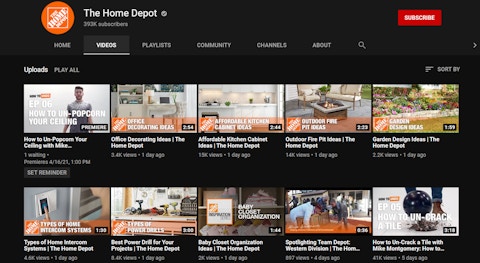The pandemic has dramatically changed how DIYers discover, research and purchase products for their projects — and many of those changes are here to stay.
DIYers are likely to take on 7-12 different projects while other audiences might only do 1-3 at a time. This creates the opportunity to continually sell to them, but you need to understand how to target them online and what they want from manufacturers first.
Venveo and The Farnsworth Group teamed up to survey nearly 1,000 DIYers across the United States about their buying behaviors and habits over the past year. Our report allowed us to discover what channels they are using to purchase products, what they demand from brands and what you can do as a manufacturer to accommodate.
Demographics of the DIYers Surveyed
The report found that DIYers are evenly split among Gen Y (Millennials), Gen X and Baby Boomers. It isn’t just a specific age group that has changed how they purchase building materials products because of the pandemic; it’s everyone.
55% of people taking on do-it-yourself projects are female and 45% are male. They have light-to-medium experience with DIY projects, and their household income ranges from $25,0000-$124,999.

Since 71% of women use social networks compared to 62% of men, your company can use platforms like Pinterest to reach more female DIYers. Create boards about home decor projects, repainting, furniture, tutorials and other topics your audience would enjoy.
Men are most active on Twitter, LinkedIn and YouTube. Start conversations with followers on Twitter to drum up engagement. Post thought leadership content and articles on LinkedIn. Leverage YouTube to show off products, customer success stories and behind the scenes of your company.
Purchase Channels DIYers Use
Out of all of the audiences that Venveo and The Farnsworth Group studied, DIYers had the smallest change in how they purchase products. That doesn’t take away from its potential impact on your business though.
Pre-pandemic, DIYers shopped both online and at physical stores. Post-pandemic, we saw an increase in buying online for pick-up and delivery. In fact, ordering online for these options increased.
DIYers are seeking more brands that offer curbside pickup and delivery for convenience. This means that your company requires an updated website with the ability to place orders online. 72% of respondents in the report indicated that they expect building and home improvement suppliers to have this as an option moving forward.

How Purchase Behaviors of DIYers Have Changed
One of the biggest deciding factors when choosing a brand is availability. If a building products manufacturer has products in stock when needed, they will consider using them.
20% of DIYers also tried a new retailer during the pandemic for the first time. 60% claimed it was because the supplier had what they needed in stock.
It’s a game on convenience. 79% of customers are loyal to their favorite brands but if they have to choose a new one, they will. Make sure that your company has a consistent stock of popular products, optimizes its shipping times and always communicates the state of its supply chain with customers.
For example, The Home Depot displays how much it can ship to customers and what methods are available (delivery, curbside pickup, etc.)

Brand Selection & Expectations
DIYers didn’t try a new retailer for no reason. 44% said it was because their usual brand was out of stock while the new business had available inventory. 36% of DIYers who tried a new brand also were influenced by the fact the product they were seeking was on sale.
As a building products manufacturer, it’s important to remain on top of inventory management and stock levels, as well as communicating with customers about shipping and tracking. If something isn’t available, provide alternatives or clearly let them know when they can get it next.
Take advantage of sales and discounts to drive revenue and win more business.
Look how DeWalt has a dedicated page on its website just for promotions and new deals:

Additionally, these can be promoted through online advertising channels like Facebook ads, email marketing and banners or popups to reach more prospects.
How DIYers Are Finding New Building Products Brands
DIYers have always relied on digital channels for research, finding brands and learning more about products. However, the pandemic has accelerated this behavior and it’s not going away anytime soon.
According to the report, they used the following channels:

It’s important for building materials manufacturers to have a modern and updated website. It should include information about the company, products and services along with helpful tools and content.
You can see how Old Mill Brick has a robust website to easily purchase a wide range of residential or commercial building products.

You must also become active on social media as 77% of DIYers use YouTube to research products followed by Facebook at 63%.
The Home Depot publishes videos on decor ideas, design inspiration and how to use their products.

Manufacturers can take this same approach, and then repurpose the videos for different channels like Instagram, Facebook and their company website.
The Bottom Line on DIYer Customer Insights
DIYers aren’t a customer group to ignore. They make up a large number of consumers buying building materials. Understanding how their behaviors and expectations have changed in the last year will help improve your targeting, customer acquisition and brand loyalty.
What’s shifted since 2020? Firstly, DIYers were already shopping online, but their activity has increased. They are placing online orders for delivery and store pickup, and 72% expect you to provide these services. While they’re loyal to their usual brands, 20% have tried a new one if they had what they needed in stock.
This means inventory management is more important than ever. Getting caught empty-handed with low inventory on popular products could be the deciding factor if they choose you or a competitor. At a minimum, make sure you are communicating what is in stock and when it will be next available if it isn’t.
DIYers are using social media like YouTube, Facebook and Instagram to find brands, products and deals as well. Regularly post content and engage with followers on these channels. It will help increase visibility, build relationships and drive sales.
For more data and insight on DIYer purchase behaviors, get the full report here








